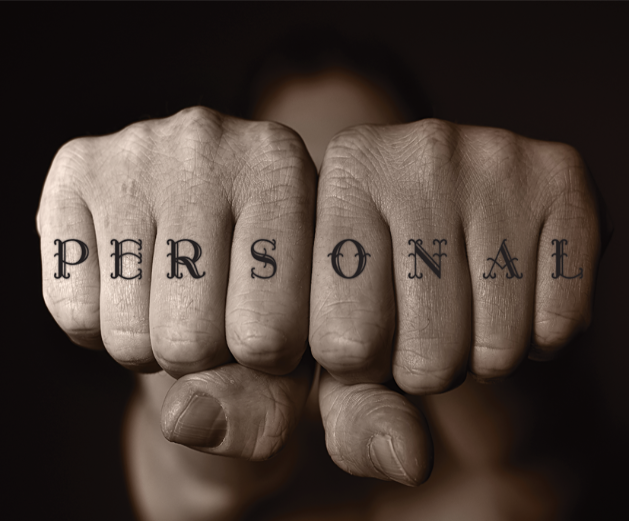The lifetime of a habit

My grandmother used Nivea face cream every day for 40 years. Many others of her generation did the same. On the face of it – pun intended – she was a loyal customer, but, in reality, there were very few other products to choose from. Nevertheless, long-running brands such as Nivea often claim a degree of customer loyalty that goes beyond rational choice.
However, Peter Dann, co-founder of research agency The Nursery, believes this is simply not the case. “People don’t think in terms of being loyal to brands – they think in terms of buying a brand that’s mentally and physically available. They don’t buy a brand because they’re emotionally attached to it.”
Dann refers to the work done by Andrew Ehrenberg and, later, Byron Sharp to demonstrate that popular brands don’t grow through driving repeat purchase, but by increasing penetration. The notion of loyalty, they argue, is not only misguided, but inaccurate, and based on assumption rather than science. What we perceive to be loyalty is actually misinterpretation of other behaviours.
To understand this more deeply, it’s useful to take a few steps back to understand how consumers make choices more generally.

Drivers and goals
According to Phil Barden, managing director of Decode Marketing, the ultimate driver of behaviour is survival – “but that’s not particularly useful when it comes to developing a brand positioning,” he says. “If everyone was trying to relate to survival, everyone would be shouting the same message and it would be a bit meaningless.”
So, says Barden, the thinking has to be more granular. Beneath survival are three primary drivers of customer behaviour – as well as ‘hybrid’ areas, where these overlap – and each is related to specific behavioural goals. The three drivers are: autonomy (encompassing goals of power, success and recognition); security (warmth, belonging and trust) and excitement (curiosity and variety). If a brand’s characteristics match an individual’s goals, this is taken to be a driver to purchase.
There are also two types of goal: explicit and implicit. Functional, explicit goals are those that consumers can – and will – tell researchers about. Implicit goals are those that they either won’t talk about – perhaps because of embarrassment, or fear of being politically incorrect – or can’t talk about because, Barden says, “as humans we simply lack the introspective access to these goals”.
Taking the detergent market as an example, consumers are explicitly looking for a product to get rid of stains and smells. However, implicitly they may be matching with, as an example, Persil’s claims that ‘Dirt is Good’ – which, according to Barden, meets the psychological goal of relief.
“At an implicit, neuropsychological goal level, the ‘Dirt is Good’ campaign addresses the dilemma mum faces between keeping her kids indoors to make life easier, but not wanting to curb their development by doing so,” he says.
By contrast, Ariel talks about cleaning efficacy at low temperatures, which would be associated with goals in what is known as the ‘discipline’ field, which are more about precision, reliability and efficiency.
“That would speak to goals such as money-saving, but also doing their bit for the environment. Psychologically, that’s a very different goal,” says Barden.
Once the alignment of these goals has been established, the theory is that loyalty is built by this process – of matching goals with brand characteristics – becoming automatic through repetition. Or, as Daniel Kahneman might put it, moving from a system-two process to a system-one process (see, The Science of Loyalty page 34 ).
Going back to that ultimate driver of behaviour – survival – the brain is constantly looking to take the easiest option to conserve energy. Making fast, efficient decisions without the need for conscious processing avoids burning too much energy – so, if a brand gets chosen without the consumer’s conscious reflection, it’s doing well.
“That’s quite a challenging thought for marketers – that the greatest success a brand can achieve is to be chosen without conscious thought,” says Barden. “You might then say that is a measure of loyalty; it’s – literally – a no-brainer.”

Breaking the habit
This suggests that loyalty in the world of fast-moving consumer goods (FMCG) is more akin to habit than deep emotional connection. Matt Hunt, head of strategy at full-service agency Futureproof, is a former head of marketing at Hovis. Bread buying, he says, is a classic example of an habitual purchase.
“Loyalty implies a sense of affinity and a depth of engagement that habit doesn’t,” he says. “Bread is habitual, but this can be construed as loyal: people buy what they know works for them. Once they have discovered something that works for them, they question it very often.”
This habit – also known as behavioural loyalty – in FMCG purchase is aided by online shopping, as most online retailers will allow customers to save a basic grocery list of products they repeatedly buy. This, says Hunt, proved to be particularly beneficial for brands such as Hovis.
“People place more trust in what’s coming when they’re not going to see it, touch it or pick it up before they buy it, if it comes from a brand.”
If that is the case, then not only does brand loyalty depend on habit, but on a desire for consistency. Add to this other cognitive influences – such as status quo bias and loss aversion – and it means that, unless a brand fails to deliver against our expectations, or a different brand intervenes with an enticing offer to lure us away, the brain’s natural preference is to stick with what it knows.
The cost and the effort to dethrone a favourite brand is huge, and can take time, because these patterns build slowly over many years. Once a strong neural network of associations has been formed, it takes time, effort and money to change those.
This means brands may grow cautious about making big changes in case it forces their ‘loyal’ customers to engage with the decision-making process and, potentially, reassess their preferences. Hunt recalls how a Hovis packaging change in 2013 meant customers couldn’t immediately find the product, so they picked up the closest-resembling alternative instead.
It can pay off, however. In the early 2000s, Hovis introduced a – now well-known – change, where its packaging was covered in baked beans. It made the product stand out, and pushed it to the top of the category, says Hunt. But, he adds: “It went through three scary weeks when people couldn’t find what they were looking for. Its sales dropped. After those three weeks, it caught the public’s imagination – and it ran.”
Life-cycle and engagement
This kind of habitual, ‘no-brainer’ processing is far from universal. Two of the biggest differentiators of engagement in the purchase process are the length of the customer life-cycle and the emotional engagement when buying. For FMCG products, the cycle is short, and the emotional engagement is typically low. However, in the automobile industry, for example, this is very different.
“On average, people buy a new car every four years and – for some customers – the purchase comes emotionally close to the birth of a child,” says Stephan Thun, European CEO at MaritzCX. “This presents varying risks and opportunities to keep customers loyal.”
Thun believes, to maintain loyalty, brands with a longer life-cycle must be more proactive in their relationships with their customers: to engage with them continuously; check their temperature; keep a dialogue going; and identify risks and opportunities before it’s too late. Retailers, on the other hand, must ensure the experiences they provide are “rock solid at every single transaction, every day”.
However, says Thun, the underlying goal of customer satisfaction remains the same. “The biggest driver of loyalty across all industries is – and will always be –customer satisfaction. There is no doubt that happy customers buy more, more often, and spread the word; that is, they help to grow the customer base for every company.”
Rational loyalty
The customer life-cycle makes loyalty a particularly complex issue for the financial services and energy markets. Paul Kavanagh, managing director of Beehive Research, argues that this is because these companies face the dual challenge of growing their marketplace with customer acquisitions, as well as trying to retain existing customers.
“Unfortunately, these goals are polarised. Every time you do a customer acquisition offer and ignore the retention side of things, loyal customers get a bit cheesed off,” he says. “But how do you get loyal customers unless you put an offer out?”
Many energy companies do appear to be ignoring retention: a story in London’s Metro newspaper, in November 2014, claimed that many of the ‘Big Six’ energy companies in the UK have been operating a “two-tier customer service system”. While new customers calling Scottish Power were kept waiting on the phone for around 50 seconds, existing customers were kept waiting for up to 57 minutes.
In a recent piece of research, Beehive and Kavanagh found that loyalty to car insurance providers was costing UK consumers between £2.2bn and £3.6bn, while loyalty to household energy providers could be leading to losses as great as £4.1bn. That research was part of a segmentation of British customers based on their attitudes toward switching insurance and energy providers. Kavanagh and Beehive found that 40% of British customers had become ‘conditioned switchers’. These customers are described as serial switchers, where “the deal is the most important factor, they don’t trust brands much, and don’t think they are being looked after”.
A conditioned switcher would probably leave the energy company that kept them waiting for 50 minutes. Another of Beehive’s segments, ‘passive loyalists’ ( 20%), may be pushed over the edge by the wait, but it’s less certain. Passive loyalists, says Kavanagh, are time poor and will only switch “with the right trigger”.
The other two segments are ‘sceptical loyalists’ ( 31%), who are loyal because they don’t trust any other supplier to be different; and ‘loyal opportunity switchers’ ( 8%), who are unsure if they want to switch, but don’t find it inconvenient to – and, “given the right conditions, could be converted to being ‘conditioned’”.
When conditioned switchers stick with their existing provider, it can be seen as a rational form of loyalty: the customer is weighing up the value of the product or service – as well as the level of inconvenience of switching their account – to make a calculated decision about their relationship with a brand.
We can see, then, that loyal behaviour depends not only on the nature of the product (its cost and life-cycle), but on the attitude and motivation of the customer. However, like Thun, Kavanagh believes the best way to encourage customers to remain loyal – regardless of their natural propensity for switching – is for companies to act more positively and proactively; an approach that, Kavanagh explains, incorporates opportunities to upsell.
For example, if a customer of a mobile phone operator is about to exceed their data limit for the month, rather than simply inform the customer of the situation, that operator could use the opportunity to suggest a different package that might better suit their needs. “It’s not just how brands react when you contact them,” Kavanagh says, “but what opportunities they have to do something proactively.”
Emotional loyalty
While habit is often mistaken for loyalty in FMCG, in B2B, inertia can masquerade as loyal behaviour. Nick Hague, a director at business-to-business research specialists B2B International, explains that the dearth of supplier choice in some commodity markets means that companies rarely have the opportunity to move away. However, where a conscious choice has been made to stay with a supplier, that loyalty can be closer to the kind we experience in our emotional lives, says Hague.
The nature of commodity markets, where competitor products can be almost indistinguishable from one another, means that personal relationships with suppliers are key.
“In B2B markets, the augmented product or service that wraps around the tangibles drives loyalty,” Hague says. “Not to say that brand isn’t important – industrial companies and B2B companies have cottoned onto that, and do place more emphasis on brand these days. But it’s very different from the consumer marketplace, where there are thousands of customers and you can’t build that same relationship.”

Points for purchase
Having a large customer base can mean a loss of one-on-one relationships, but personalisation is still possible. It has been made easier by loyalty programmes. The first in the UK, Green Shield Stamps, was launched in 1958, and retailers – primarily petrol stations and supermarkets – gave one stamp for every 6d, six old pence, of shopping. These were collected in a book and used to buy items from a Green Shield Stamp shop, or through a catalogue.
Most modern programmes also operate on a ‘points for purchase’ basis (see box, page 32 ), but their power lies not in how much people can save on a loaf of bread, but in the data retailers collect when customers use their cards. This information allows companies to identify their customers, understand their needs, and personalise the offers. While customers clearly benefit, and it can drive repeat custom (see box, page 31 ) the ability to target them this precisely is, arguably, of more benefit to the retailers. With a growing public understanding of the possibilities of big data, customers are beginning to realise the power they hold.
This underlines the importance of businesses adopting longer-term loyalty strategies. “Anyone can bribe a customer to switch in the short term, but this will not support margins,” says Martin Hayward, senior vice-president of global digital strategy and futures at customer loyalty management company Aimia. “Future winners will be those businesses that create real relationships with their customers over the longer term, understanding their needs in detail, and deepening engagement that transcends short-term price offers.”
The role of research
This is a strong reminder of the importance of research in driving loyalty, whether that loyalty is behavioural, rational or emotional. Understanding the drivers and the context of customer purchase – and enabling a degree of personalisation – are the areas in which customer insight is invaluable.
“When companies grow and grow, they become more removed from the person who’s using the product,” says Kavanagh. “That’s where market research steps in.”
For Laura Lee – UK customer experience director of brewing company and distributor Molson Coors, and a client of Kavanagh’s – building loyalty relies not only on involving the customers in the feedback process, but ensuring they know their opinion has been heard. “The more customers feel connected to the business – and the more they feel they’re helping to shape the direction in which you’re going – the more loyal they are, as they have a vested interest in seeing what they suggested play out,” she said.
Molson Coors operates a system by which survey results are fed back to sales managers, who are encouraged to call ‘detractors’ – customers who have given negative feedback – to “close the loop”. They do this by going through the negative feedback with the customer, seeking more detail, then outlining how this area will be addressed. The company’s UK board of directors also make ‘detractor calls’ each quarter.
Kavanagh adds that technology allowing constant feedback has been a key component of this. “A sales rep can be out there, talking to customers, but they’re not there at the point of consumption. The fact that we can now get real-time feedback, whether on the street or in a manufacturing plant, means we can find out if an order has been delivered on time and in full.”
While customers can be shaken out of their FMCG habits by change – whether that’s a packaging or price alteration – straightforward research is not always enough to be able to anticipate these reactions. “Consumers aren’t very good at telling you how they’ll behave when you change something,” says Hunt. “You have to read between the lines. Understanding that system-one subconscious, where 90% of low-interest category purchase decisions are made, is key.”
The basic role of insight is in understanding consumers’ explicit and implicit goals, and how the category and brand can meet them. Then, research should be used to understand what is so distinctive about your brand that it can meet these goals better than the competition. “Have that as your compass for development,” says Hunt, “then you can inject an air of creativity into the proposition.”
Perhaps most importantly, research can help brands to take the onus off the consumer to work out where a brand or product fits into their life. People aren’t disloyal to brands, they’re just disinterested. If loyalty is about reducing cognitive effort, brands need to be doing their part to make people interested; showing customers that they’re relevant and useful to them. For customers to be loyal to brands, brands must be loyal to customers.
“This means being salient,” says Dann. “It means being easy to call to mind, easy to recognise – and behaving consistently. You’re dealing with an audience that are spending the vast majority of their time thinking about things unrelated to you and your sector. It’s research’s job to work out how brands can fit into their lives.”

We hope you enjoyed this article.
Research Live is published by MRS.
The Market Research Society (MRS) exists to promote and protect the research sector, showcasing how research delivers impact for businesses and government.
Members of MRS enjoy many benefits including tailoured policy guidance, discounts on training and conferences, and access to member-only content.
For example, there's an archive of winning case studies from over a decade of MRS Awards.
Find out more about the benefits of joining MRS here.














0 Comments